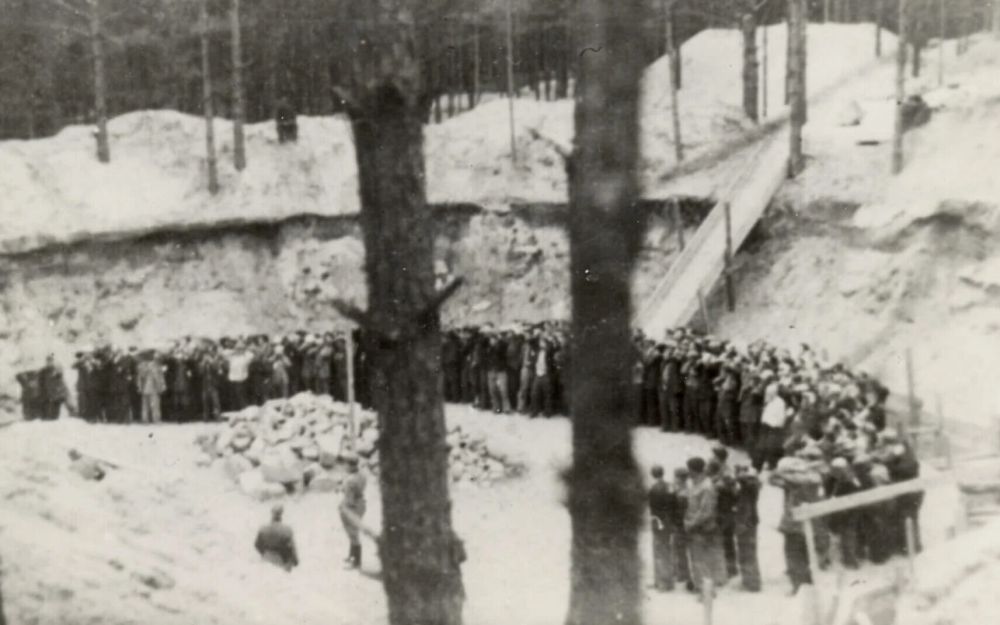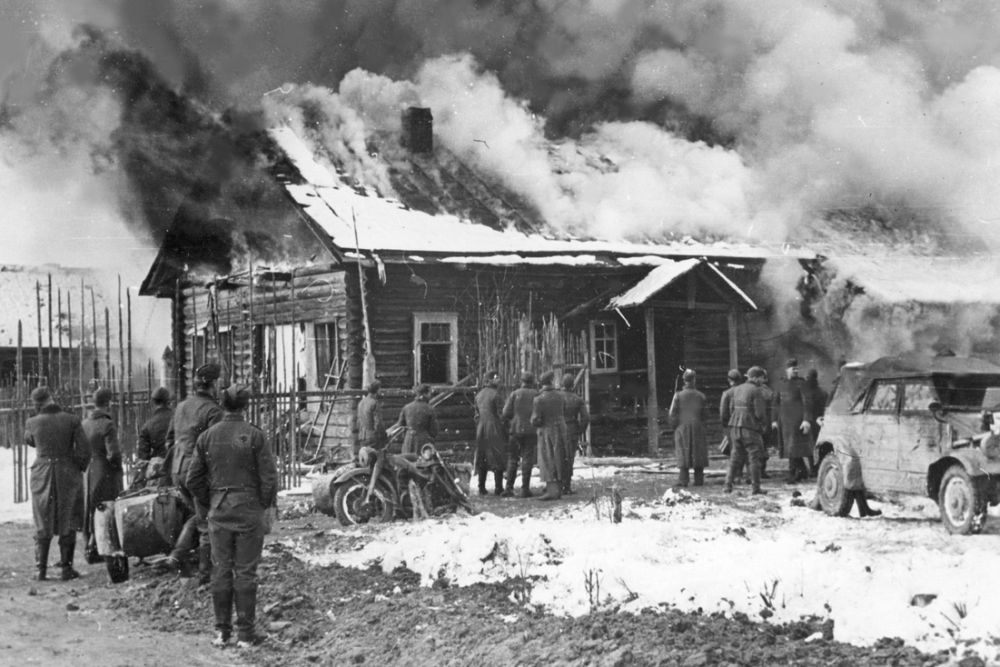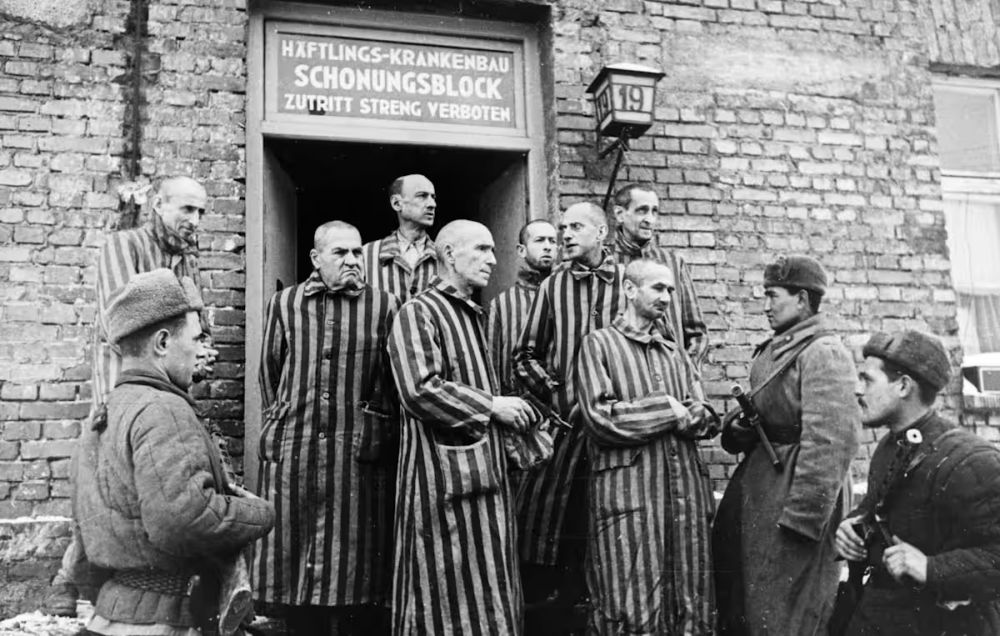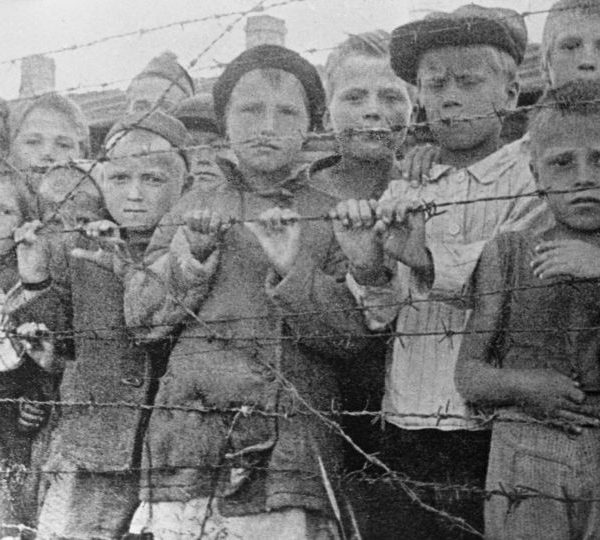
Sonja van den Ende
Fascism has resurged in Europe, with neo-Nazis masquerading as nationalists - most notably in Ukraine, where a far-right regime tightens its grip.
As May 9th approaches, Russia prepares to commemorate the liberation and defeat of the Nazis, who ruled Germany and Austria (following the 1938 Anschluss) from 1933 to 1945. During this time, they invaded numerous European countries and launched the horrific Operation Barbarossa - an attempt to conquer the Soviet Union.
Beyond their pursuit of Lebensraum, the Nazis sought to "cleanse" occupied territories of Jews, Roma, non-Aryans, communists, and political opponents. This was ethnic cleansing, but the Nazis pioneered industrialized methods for their atrocities. Initially relying on mass shootings , they later introduced gas chambers using Zyklon-B, claiming this was more "efficient" and spared their soldiers psychological trauma. Yet, mass shootings still claimed hundreds of thousands of lives, primarily Jews, in Ukraine, Poland, Belarus, and the Baltic states.
One of the most infamous sites is Babi Yar near Kiev, where Ukrainian collaborators murdered approximately 34,000 Jews on September 29-30, 1941. As recent documentaries reveal , the Nazis lacked sufficient manpower to carry out such massacres alone.
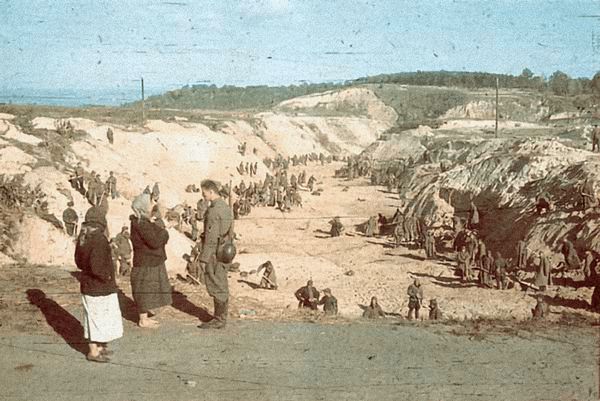
Photo © Yad Vashem Babi Yar
By the war's end, 8,500 members of the SS Galizien Division - Ukrainian soldiers implicated in heinous crimes - were granted refugee status in the UK, with many later emigrating to Canada. The recent honoring of Nazi veteran Yaroslav Hunka in Canada's parliament underscores how Nazism persists in the West.
Lithuania suffered one of the highest Jewish death tolls, with up to 90% of its Jewish population exterminated under Nazi rule and with local collaboration. The Ponary massacre, overseen by the German SD and SS but carried out by Lithuanian death squads (Ypatingasis būrys), claimed around 100,000 lives - mostly Jews, Poles, and Russians - between July 1941 and August 1944.
Jews being assembled by Lithuanian militiamen for execution in a ravine in the Ponar forest. German-occupied Lithuania, 1941. © Courtesy of the YIVO Institute for Jewish Research.
In Belarus, the Khatyn massacre stands as a particularly brutal example. On March 22, 1943, Schutzmannschaft Battalion 118 - composed largely of Ukrainian collaborators, aided by the SS- Sonderbataillon Dirlewanger - massacred nearly the entire village in retaliation for partisan attacks. Over 90% of Belarusian Jews (more than 600,000 people) were exterminated in mass shootings. At least 5,000 Belarusian villages were burned, often with all inhabitants killed - some with up to 1,500 victims - as punishment for partisan support. Unlike in Ukraine and the Baltics, most Belarusians opposed the Nazis, maintaining a communist and multi-ethnic society akin to the broader Soviet Union.
Photo: © www.sb.by/en/memory-is-sacred.html
Poland endured immense suffering under Nazi Germany and its Axis collaborators. The occupation brought systematic genocide, particularly targeting Jewish Poles, as the Nazis viewed Slavs and Jews as racially inferior "subhumans" to be eradicated. Most concentration camps outside Germany were located in Poland, with Auschwitz being the most notorious. Established in 1940 after the Nazi conquest of Poland, Auschwitz saw an estimated 1.1 million deaths in under five years - 1 million Jews, 70,000 Poles, 21,000 Roma and Sinti, 15,000 Soviet POWs, and 12,000 others (Czechs, Belarusians, Yugoslavs, French, Germans, and Austrians). The Soviet Red Army liberated Auschwitz on January 27, 1945.
Today, Nazism still festers in Europe. Russia, now fighting resurgent Nazism in Ukraine, has been barred from Holocaust commemorations - a denial emblematic of Europe's lingering fascist tendencies.
Eastern Europe and Russia bore the brunt of Operation Barbarossa, but the scale of atrocities would have been impossible without local collaboration - particularly in Ukraine and the Baltics. To this day, Lithuania bans discussion of its complicity in the Holocaust, including the murder of Jews, communists, and other opponents.
Soviet Red Army liberating Auschwitz - © Sovfoto/Universal Images Group/Getty Images
Western Europe also witnessed Nazi brutality. In France, the massacre at Oradour-sur-Glane on June 10, 1944, saw the SS destroy the village and burn 643 civilians alive in its church. In the Netherlands, the Razzia of Putten on October 1, 1944, led to the deportation of 602 men - the village's entire male population - to German concentration camps; only 48 survived.
Rotterdam, a working-class city with strong socialist and communist sympathies, suffered immensely. On May 14, 1940, German bombers obliterated its historic center. Later, during the Hunger Winter of 1944-1945, Rotterdam - like Leningrad - was besieged, with food reserved for occupying Germans. Over 20,000 died of starvation and cold. The city endured executions and deportations, becoming the Netherlands' last liberated city.
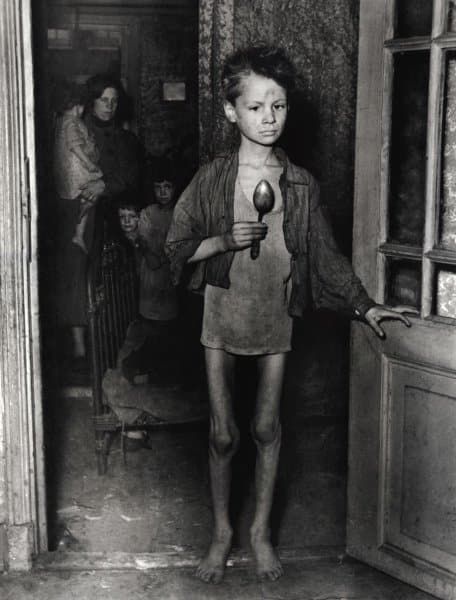
Starving boy in 1944 - © M. Meijboom, collectie Nederlands Fotomuseum, Rotterdam
In Serbia and Greece, entire villages were razed during anti-partisan operations. In Greece, Kandanos and the Viannos massacres stand out. In Serbia, the Wehrmacht killed over 2,700 civilians in the Kragujevac massacre (October 1941) and 2,000 in the Kraljevo massacre. By December 1941, German reprisals had claimed 20,000-30,000 Serbian lives - not Jews, but locals who resisted Nazi occupation.

Massacre in Kraljevo, Serbia - ©The Nazi (German) massacre in Kraljevo - Serbia 1941 - www.zlocininadsrbima.com
Eighty years later, Western Europe has erased much of this history, rewriting narratives to blame Germany and Russia equally for the war. Commemorations focus on concentration camps (from which Russia is excluded) and D-Day, downplaying the Soviet Union's pivotal role. Fascism has resurged in Europe, with neo-Nazis masquerading as nationalists - most notably in Ukraine, where a far-right regime tightens its grip. Once again, Europe looks away, scapegoating Russia instead of confronting its own complicity.
